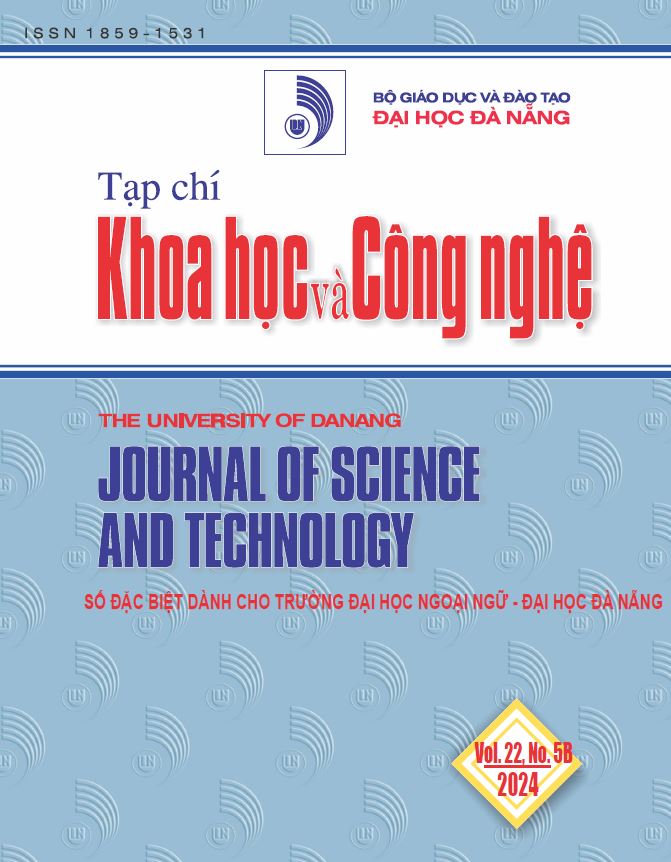Nâng cao sự hứng thú và tự học của người học trong mô hình lớp học đảo ngược: từ góc độ học thuyết tự quyết
 Tóm tắt: 748
Tóm tắt: 748
 |
|  PDF: 485
PDF: 485 
##plugins.themes.academic_pro.article.main##
Author
-
Nguyen Bich DieuThe University of Danang - University of Foreign Language Studies, Vietnam
Từ khóa:
Tóm tắt
Nghiên cứu này nhằm tìm hiểu những ảnh hưởng của mô hình lớp học đảo ngược (FC) đối với sự hứng thú và tính tự chủ của sinh viên dưới góc độ của học thuyết tự quyết (SDT). Kết quả cho thấy, phương pháp FC tăng cường sự hứng thú của người học thông qua việc nâng cao khả năng tự chủ và làm chủ được tiến độ học của mình, đồng thời cải thiện năng lực học tập thông qua những phản hồi được cá nhân hóa. Một số khó khăn bao gồm việc tự điều chỉnh để làm quen với phương thức tự học, duy trì tính kỷ luật với việc nghiên cứu tài liệu trước khi đến lớp, và yêu cầu đáp ứng được các tiến độ học đa dạng của người học. Nghiên cứu còn chỉ ra một số các giải pháp như cần có những hướng dẫn cụ thể hơn, bổ sung các bài kiểm tra định kỳ và tài nguyên học tập để tăng tính hiệu quả của việc tự học qua phương pháp này.
Tài liệu tham khảo
-
[1] I. Santos and S. Serpa, “Flipped Classroom for an Active Learning”, Journal of Education and e-Learning Research, vol. 7, no. 2, pp. 167-173, Jul. 2020.
[2] Li, A. Lund, and A. Nordsteien, “The link between flipped and active learning: a scoping review”, Teaching in Higher Education, vol. 28, no. 8, pp. 1993-2027, 2023.
[3] Zhang, B. Zhang, and F. Zhang, “Student-centered case-based teaching and online - offline case discussion in postgraduate courses of computer science”, Int J Educ Technol High Educ, vol. 20, no. 1, art. no. 6, Jan. 2023.
[4] G. Mehring, “Present research on the flipped classroom and potential tools for the EFL classroom”, Computers in the Schools, vol. 33, no. 1, pp. 1–10, 2016, doi: 10.1080/07380569.2016.1139912.
[5] C. V. Wu, J. S. Chen Hsieh, and J. C. Yang, “Creating an online learning community in a flipped classroom to enhance EFL learners' oral proficiency”, Computer Assisted Language Learning, vol. 20, no. 2, pp. 142–157, 2017.
[6] Samadi et al., “Impact of flipped classroom on EFL learners’ self-regulated learning and higher-order thinking skills during the Covid-19 pandemic”, Asian J. Second. Foreign. Lang. Educ., vol. 9, no. 24, 2024.
[7] Webb and E. Doman, “Impacts of flipped classrooms on learner attitudes towards technology-enhanced language learning”, Computer Assisted Language Learning, vol. 33, no. 1, pp. 240-274, 2019.
[8] Missildine, R. Fountain, L. Summers, and K. Gosselin, “Flipping the classroom to improve student performance and satisfaction”, Journal of Nursing Education, vol. 52, no. 10, pp. 597–599, 2013.
[9] Strayer, Inverting the classroom: A study of the learning environment when an intelligent tutoring system is used to help students learn. Saarbrücken, Germany: VDM Verlag Dr. Müller, 2009.
[10] L. Chen, “Impacts of flipped classroom in high school health education”, Journal of Educational Technology Systems, vol. 44, no. 4, pp. 411–420, 2016.
[11] Simpson and E. Richards, “Flipping the classroom to teach population health: Increasing the relevance”, Nurse Education in Practice, vol. 15, no. 3, pp. 162–167, 2015.
[12] B. Milman, “The flipped classroom strategy: What is it and how can it best be used?” Distance Learning, vol. 9, no. 3, pp. 85–87, 2012.
[13] K. Bhagat, C. N. Chang, and C. Y. Chang, “The impact of the flipped classroom on mathematics concept learning in high school”, Educational Technology & Society, vol. 19, no. 3, pp. 134–142, 2016.
[14] P. Lopes and F. Soares, “Perception and performance in a flipped Financial Mathematics classroom”, The International Journal of Management Education, vol. 16, pp. 105–113, 2018.
[15] L. Deci, J. P. Connell, and R. M. Ryan, “Self-determination in a work organization”, Journal of Applied Psychology, vol. 74, no. 4, pp. 580–590, 1989.
[16] Deci and R. Ryan, “Self-determination theory: a macrotheory of human motivation, development, and health”, Canadian Psychology, vol. 49, no. 3, pp. 182–185, 2008.
[17] Gagné and E. L. Deci, “Self-determination theory and work motivation”, Journal of Organizational Behavior, vol. 26, no. 4, pp. 331–362, 2005.
[18] Wilding, “The application of self-determination theory to support students experiencing disaffection”, Educational Psychology in Practice, vol. 31, no. 2, pp. 137–149, 2015.
[19] Delahaye and S. Choy, Human resource development: learning, knowing and growing, 4th ed. Victoria, Australia: Tilde University Press, 2017.
[20] Momani, M. A. Asiri, and S. M. Alatawi, “The impact of implementing active learning strategies in teaching English from the perspective of Tabuk Educational Region intermediate school teachers”, Asian Journal of Educational Research, vol. 4, no. 1, pp. 19–35, 2016.
[21] M. Sheldon and V. Filak, “Manipulating autonomy, competence, and relatedness support in a game learning context: new evidence that all three needs matter”, British Journal of Social Psychology, vol. 47, no. 2, pp. 267–283, 2008.
[22] Wingate, N. Andon, and A. Cogo, “Embedding academic writing instruction into subject teaching: a case study”, Active Learning in Higher Education, vol. 12, no. 1, pp. 69–81, 2011.
[23] A. Miles and K. Foggett, “Supporting our students to achieve academic success in the unfamiliar world of flipped and blended classrooms”, Journal of University Teaching and Learning Practice, vol. 13, no. 4, 2016.
[24] H. J. V. Nuland, T. W. Taris, M. Boekaerts, and R. L. Martens, “Testing the hierarchical SDT model: the case of performance-oriented classrooms”, European Journal of Psychology of Education, vol. 27, no. 4, pp. 467–482, 2012.



